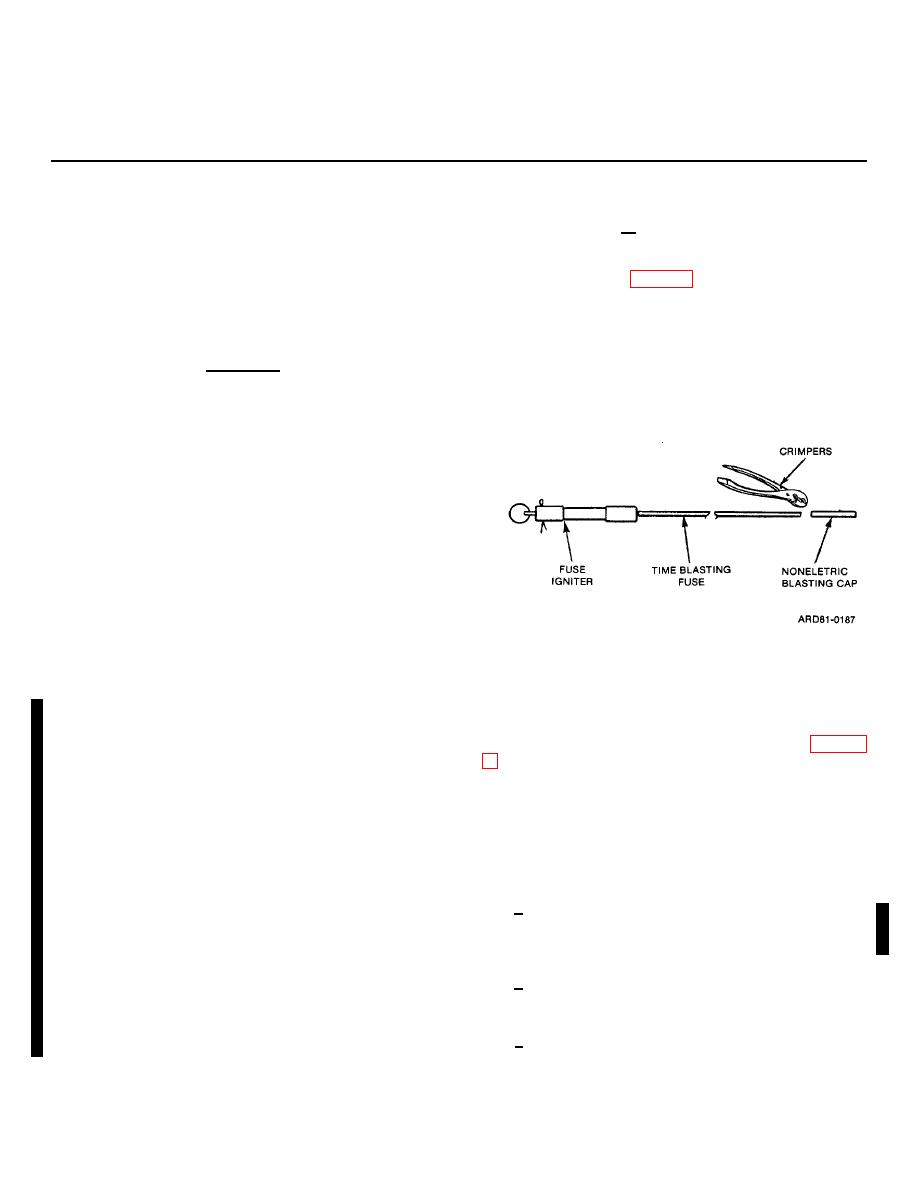 |
|||
|
|
|||
|
Page Title:
CHAPTER 5 FIRING SYSTEMS PROCEDURES |
|
||
| ||||||||||
|
|
 TM 9-1300-277
CHAPTER 5
FIRING SYSTEMS PROCEDURES
blasting fuse and cap prior to
5-1. GENERAL
insertion into the cap well of the
This chapter contains general operating procedures for
explosive, IF, the safety pin is still
both the nonelectric and electric firing systems. It also
installed.
includes procedures for priming charges, use of
detonation cord, dual firing systems, preparation and
A nonelectric system (fig. 5-1) consists of a fuse igniter,
use of ignition trains, and prevention and handling of
time blasting fuse, and nonelectric blasting cap. Upon
misfires. More detailed information can be found in FM
activation, the fuse igniter initiates the time blasting fuse
5-25 and TM 9-1375-213-12.
which transmits the flame that fires the blasting cap.
The blasting cap provides a shock adequate to initiate
WARNING
the explosive charge. When more than one charge
The preferred firing system for
must be detonated simultaneously, the nonelectric
system must be combined with detonating cord (pars.
demolition is the electric firing
5-12 through 5-16) to ensure simultaneous firing.
system. When the electrical system
is not feasible, or when there is an
electromagnetic radiation hazard
present, the nonelectrical firing
system will be used.
When items to be detonated are
covered with earth, blasting shall not
be buried beneath ground level with
the initiating charge. The initiating
explosives should be primed with
primacord of sufficient length to
reach up through the covering to a
point where the blasting cap may be
Figure 5-1. Nonelectric firing system.
connected above the ground level.
5-3.
SAFETY PRECAUTIONS FOR NONELECTRIC
5-2. NONELECTRIC SYSTEMS
FIRING SYSTEMS
NOTE
In addition to the general safety requirements in Chapter
A nonelectric priming system will
normally be assembled in the field at
the use of nonelectric firing systems.
the demolition site.
Under some
circumstances, if desired, some
NOTE
subassembling may be done in
Blasting
caps
less
than
the
advance in order to save time or to
equivalent of a commercial No. 8 cap
avoid exposing components to rain,
will not be used.
atc.. When it is desired to have 'he
assemblies prepared more than t few
a. The ready supply of nonelectric blasting caps
hours in advance, use blasting cap
should be kept in non-propagating containers/packs.
sealant to waterproof the fuse cap
Blasting caps will be handled near their open ends.
joint. This sealant will protect the
fuse cap joint for an indefinite period
b. Capped time blasting fuses will be handled
of time. The assembly will be treated
carefully so that blasting caps do not contact each other.
as a blasting cap for storage and
transportation (e.g., keep separate
c. The preparation of initiators will be performed at
from other explosives). When using
a distance of not less than 7.5 meters (25 feet) from the
waterproof time blasting fuse igniter
supply of blasting caps or other explosives.
M60, it may be assembled to the
Change 2
5-1
|
|
Privacy Statement - Press Release - Copyright Information. - Contact Us |